Get our independent lab tests, expert reviews and honest advice.
CHOICE review of appliance packaging finds plenty of non-recyclables
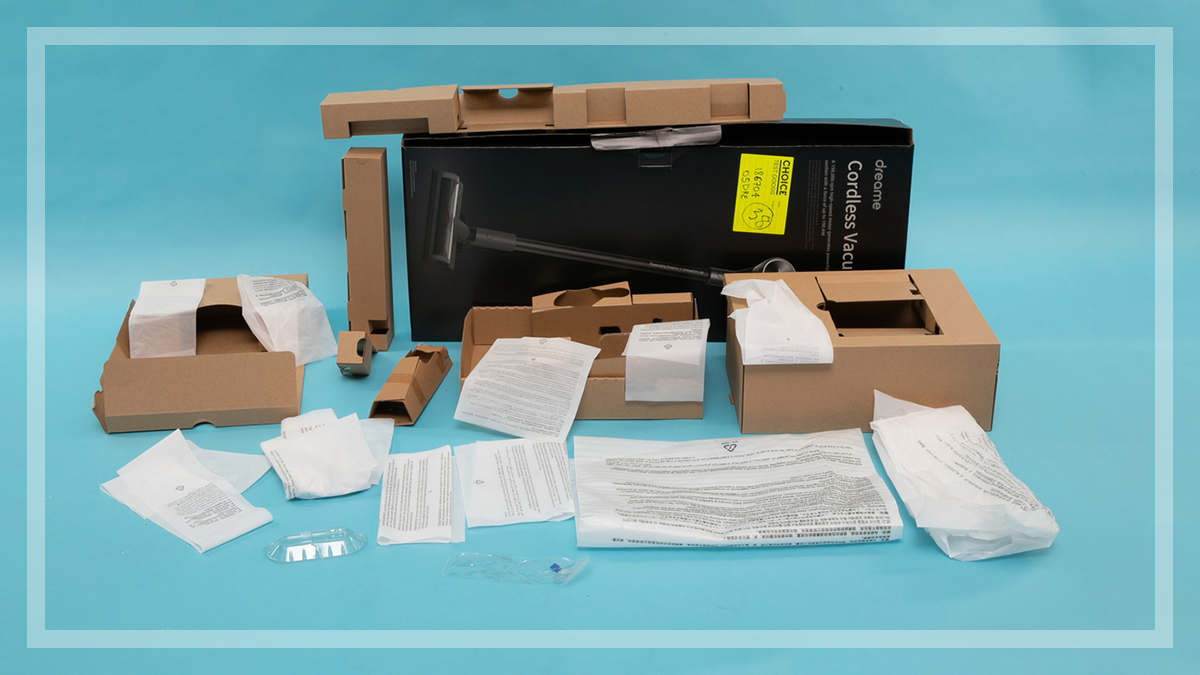
Need to know
- We reviewed the packaging materials from some of Australia's most popular appliance brands, including Breville, Philips, Kambrook, Anko and Dyson
- While some manufacturers are using recyclable cardboard and fibre to package their products, others are still using blocks of landfill-bound polystyrene and other non-recyclable plastic materials
- Manufacturers will need to lift their game to reach sustainability targets
The not-for-profit Australian Packaging Covenant Organisation (APCO) has an ambitious goal – to make sure all packaging that’s made, used or sold in Australia is recyclable, reusable or compostable by 2025.
Set in 2018, the National Packaging Targets were the result of extensive industry and government consultation in Australia and are in line with the ambitious sustainable packaging initiatives being rolled out around the world.
Full recyclability is just one of the four targets, and it seems we’re making pretty good progress on that front.
Former APCO CEO Brooke Donnelly told us last year that 86% of the approximately 6.3 million tonnes of packaging that makes its way through the Australian market every year is designed to be recycled here. (Donnelly was succeeded by current CEO Chris Foley in June last year.)
Packaging waste remains a major sustainability issue
Due to inefficient recycling processes and gaps in consumer understanding, however, only about half of it (55%) gets recycled and reused. The rest goes to our ever-expanding landfill sites.
Packaging waste remains a major sustainability issue.
To achieve its goals for the greater good, APCO has been working with manufacturers in a stewardship role to help them reduce the amount of non-recyclable materials they use.
Expert review of appliance packaging
Over recent months, CHOICE collected and catalogued the packaging materials that came with some of the products we test in our labs.
We set aside the packaging from kettles, air fryers and stick vacuums – 38 products in all – manufactured by some of Australia’s most popular appliance brands, including Breville, Philips, Kambrook, Anko and Dyson.
In early November, CHOICE hosted a review of these packaging materials with the help of representatives from APCO and the Australian Institute of Packaging (AIP).
The packaging experts used APCO’s Sustainable Packaging Guidelines as a basis for evaluating the packaging. They provided expert analysis and comments on how each of the product packages performed in terms of sustainability and identified what was and wasn’t recyclable in Australia.
Drawing on the information provided by APCO and the AIP, CHOICE continued the analysis, counting how many packaging components were in each box, determining how many of these were recyclable, recording the number of REDcycle components (plastic bags labelled for soft plastics recycling), and checking for the use of non-recyclable foam. We also reviewed the recycling and disposal labelling.
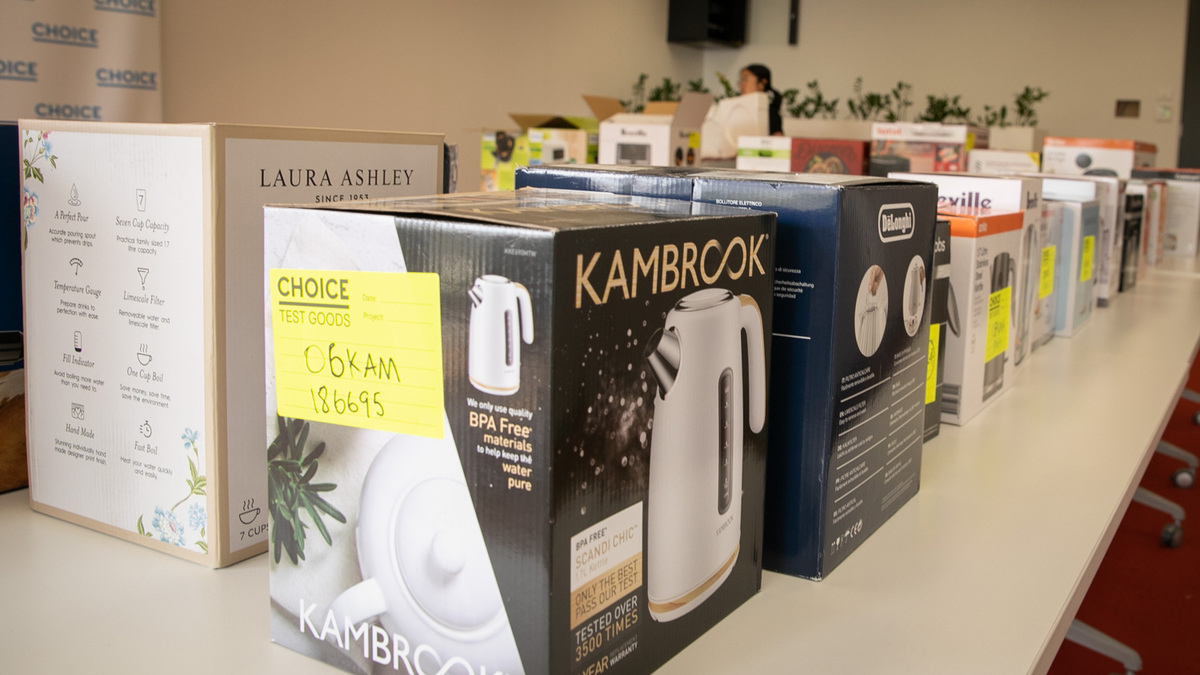
Too much polystyrene, not enough cardboard
The results of the evaluation reveal that some manufacturers are doing substantially better than others in the product categories we checked when it comes to reducing packaging waste.
(We evaluated a limited number of product packages from each manufacturer. It’s possible that those with unsustainable practices in one product category may be doing better in other categories.)
While many are using recyclable cardboard and fibre to package their products, others are still using blocks of landfill-bound polystyrene and other non-recyclable plastic materials – sometimes in excessive amounts.
And where some manufacturers are using just a few packaging components made of the same or similar material – thereby making it easier for consumers to recycle – others pack their products in a complicated array of materials, making it difficult to separate and therefore more likely to end up in landfill.
While many are using recyclable cardboard and fibre, others are still using polystyrene and other non-recyclable plastic materials – sometimes in excessive amounts
In addition, many manufacturers are still using non-recyclable plastic three-pin plug protectors and plastic-coated wire ties instead of more sustainable options.
In nearly all cases, manufacturers are not doing a very good job of making it clear to consumers in their package labelling which components are recyclable and what consumers should do with them. This is where the Australasian Recycling Label, or ARL, comes in, but more on that later.
Black + Decker Power Series Extreme stick vacuum – 100% recyclable packaging
Beko PowerClean Pro stick vacuum – 96% recyclable packaging
Dyson V8 and V12 Detect Slim Absolute stick vacuums – 95% recyclable packaging
Shark Cordless Apex Pro Pet Vacuum – 39% recyclable packaging
Cuisinart Multi-temp cordless kettle – 38% recyclable packaging
Dreame Cordless Vacuum T30 stick vacuum – 30% recyclable packaging
Overall results and key findings
REDcycle soft plastics recycling on hold
None of the boxes in our evaluation were free of plastic packaging components. Thirty out of 38 products used soft plastics compatible with the REDcycle scheme, and these were noted as being recyclable when the assessment was done by the APCO and AIP experts.
As of 9 November 2022, however, the REDcycle program has paused its collection of soft plastics, and advised customers and consumers to place the soft plastic into the general waste bin (unless your local council has advised otherwise) until a solution is found.
The challenges facing the REDcycle scheme highlight the lack of a robust soft plastics recycling infrastructure in Australia.
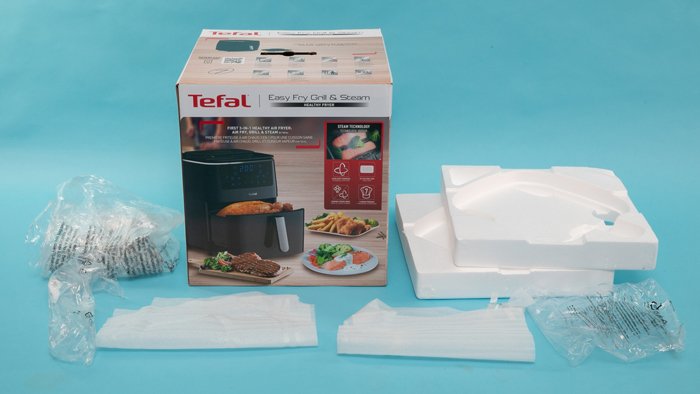
Full recyclability hard to come by
Only one product had fully recyclable packaging (including three REDcycle components) – the Black & Decker stick vacuum. Thirteen products had just one non-recyclable component, often a small plastic power plug protector. Our external experts noted that these plastic components could and should be replaced by paper or cardboard components.
Only two products (the Philips air fryers) indicated on the outer box that the boxes were made of at least 90% recyclable material. The boxes for the Breville and Kambrook products noted that they were “printed on recycled paper”, but other packaging lacked such claims.
The findings indicate that manufacturers on the whole need to do more if the goal of getting rid of all non-recyclable packaging is to be met, including the phasing out of problematic and unnecessary plastic packaging.
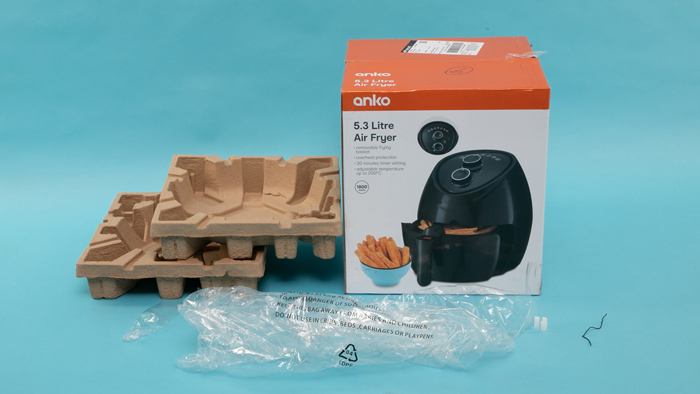
Overuse of expanded foam
Nearly 60% (23) of the product packages contained non-recyclable expanded plastic foams, such as polystyrene and polyethylene (colloquially known as Styrofoam). Expanded polystyrene (EPS) has been flagged by APCO as a material of concern and the organisation is working with the Australian government and industry to phase out its use as part of the National Plastics Plan, but no deadline to achieve this goal has been set.
Fifteen products, across all three product categories on test, had no plastic foam components, indicating that phasing out foam is achievable
Expanded foam was often present in the form of moulded bases and infill components. A number of products used foam bags, which are not easily recognisable as foam or as a non-recyclable item. The APCO and AIP experts made the point that foam packaging components could and should be replaced by cardboard, paper and moulded fibre. Fifteen products, across all three product categories on test, had no plastic foam components, indicating that phasing out foam is achievable.
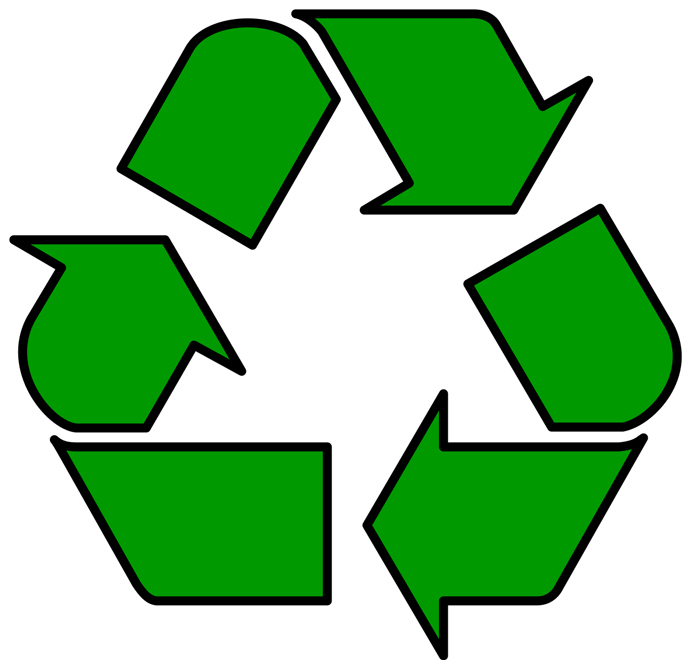
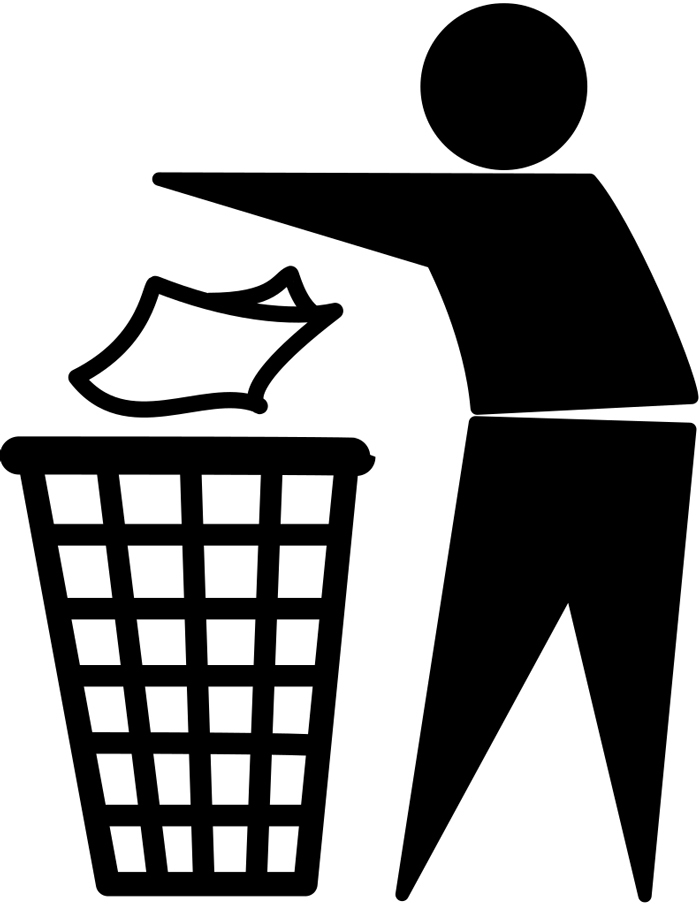
Recycling and disposal labelling
The boxes we evaluated featured a variety of different symbols, including the familiar Litterman logo (illustration of a figure putting rubbish in a bin), the Mobius Loop recycling symbol (three arrows forming a loop) and the Plastics Identification Code (three arrows forming a triangle containing a number from 1–7).
But we also identified a number of miscellaneous markings that were not easily decipherable. Without an explanation of what these symbols mean, consumers would be understandably confused about whether the materials are recyclable and what to do with them. Some boxes also had symbols in areas not easily found. The Smeg Electric Kettle box, for instance, had a Litterman logo side-by-side with a recyclable label on the bottom of the outer box.
We also identified a number of miscellaneous markings that were not easily decipherable
While a variety of recycling labels were used, none of the packaging carried the Australian Recycling Label (ARL) – an APCO-led initiative aimed at giving consumers in Australia and New Zealand clear information about what goes where – the recycling bin, rubbish bin, or back to the store. Many retailers in Australia have embraced the ARL.
Eight product packages contained no recycling instructions on the outer box, indicating that some manufacturers could do better in communicating how best to dispose of their packaging.
Product-by-product evaluation results
We counted the number of individual packaging components in each product box with the help of our experts, who also helped to identify what was and wasn’t recyclable. We then calculated the percentage of recyclable components for each product. The higher the percentage, the more recyclable components the packaging contains.
We also counted the number of REDcycle components in each box and made a note of whether foam-based materials were used. And we recorded the recycling and disposal labels and noted whether or not the packaging was marked with the ARL. Our APCO and AIP experts included comments on how each product did in terms of the overall recyclability of its packaging components.
Abbreviations:
- EPS – non-recyclable expanded polystyrene foam
- EPE – non-recyclable expanded polyethylene foam
- PE – polyethylene
Note: While the REDcycle soft plastics recycling scheme is currently on hold, it was in operation when these packages were manufactured and was therefore included in the experts’ recyclability evaluations.
| Brand and product | Recyclable components | Non-recyclable components | % Recyclable | Expert comments and observations |
|---|---|---|---|---|
| Philips Essential XL | 6 | 1 | 86 | Use of comparatively more cardboard infills and less plastic. Positive features: hand holes for easy handling & 90% recycling content on the outer box. |
| Philips Essential | 4 | 2 | 67 | Use of comparatively more cardboard infills and less plastic. Positive features: hand holes for easy handling and 90% recycling content on the outer box. |
| Sunbeam Copper Infused Duraceramic Digital Air Fryer | 6 | 3 | 67 | Use of polystyrene with top and bottom EPS inserts. The EPS could be replaced with a moulded fibre insert. Use of various plastic materials and no cardboard infills. |
| Anko 5.3 Litre Air Fryer | 4 | 2 | 67 | Good use of cardboard and fibre infills and less plastic. No hand holes provided for this larger product. |
| Breville Air Fryer Chef | 4 | 3 | 57 | Use of polystyrene, plastic and no cardboard infills. The EPS foam pieces could easily be converted to moulded fibre. Use of UV varnish on the outer box reduces recycling performance. Hand holes would assist consumers carrying this larger product. |
| Ninja 3.8L Air Fryer | 5 | 4 | 56 | Use of polystyrene with various plastic materials and no cardboard infills. Excessive use of EPS foam pieces which could easily be converted to moulded fibre. Positive feature: hand holes for easy handling. |
| Russell Hobbs Brooklyn Air Fryer | 5 | 6 | 45 | Use of polystyrene, plastic and not much cardboard. Excessive use of EPS foam pieces which could easily be converted to moulded fibre. Hand holes would assist consumers carrying this larger product. |
| Instant Vortex Plus Clearcook Air Fryer | 4 | 5 | 44 | Use of polystyrene with various plastic materials and no cardboard infills. Excessive use of EPS which could easily be converted to moulded fibre. Plastic handles will go to landfill. Replace with cut out hand holes in the external carton. Positive feature: crash bottom design on box eliminates the need for tape. |
| Tefal Easy Fry Grill & Steam Healthy Fryer | 5 | 7 | 42 | Use of polystyrene with top and bottom EPS inserts. Use of various plastic materials and no use of cardboard infills. Excessive use of EPS, which could easily be converted to moulded fibre. Plastic handles will go to landfill. Suggestion to replace this with hand hole cut outs. |
| Brand and product | Recyclable components | Non-recyclable components | % Recyclable | Expert comments and observations |
|---|---|---|---|---|
| Morphy Richards Ascend | 9 | 1 | 90 | No EPS. Good use of recyclable cardboard components for protection. No recycling instructions. |
| DeLonghi Ballerina | 9 | 1 | 90 | Heavy use of plastic bags (6) and relatively little cardboard. Good use of the moulded fibre for the base. |
| Morphy Richards Verve | 7 | 1 | 88 | No EPS. Good use of recyclable packaging. Clever use of the external top flap to locate and protect the kettle. No recycling instructions. |
| Anko Stainless Steel | 6 | 1 | 86 | No EPS. Good use of recyclable cardboard for protecting the product. No recycling instructions. |
| Anko Clear Variable Temperature Kettle | 5 | 1 | 83 | No EPS. Good use of cardboard infills and less plastic. No recycling instructions. |
| Laura Ashley Elveden | 5 | 1 | 83 | No EPS. Good use of corrugated cardboard with minimal packaging components. Good use of carton flaps for locating the kettle. Confusing recycling messaging on the box. |
| Smeg Electric Kettle KLF05BLAU | 4 | 1 | 80 | No EPS. Confusing recycling information (Mobius loop and Litterman). |
| Sunbeam Kyoto City Collection | 7 | 2 | 78 | Removal of EPE foam bags an improvement on the Obliq model, but external lamination of outer carton reduces recyclability. Use of printed and lacquered internals also reduces recyclability. |
| Russell Hobbs Paddington Stainless Steel | 7 | 2 | 78 | No EPS and good use of cardboard to protect the product. Comparatively more plastic and was one of the few packages to include bubble wrap. |
| Russell Hobbs Stone Textured | 8 | 3 | 73 | Large volume of small packaging components and EPE foam base. Moulded fibre should be considered. |
| Sunbeam Fresh Start | 5 | 2 | 72 | Good use of cardboard components to protect the product. Should eliminate EPE foam bag and replace with PE bag. |
| Breville Multi Temp | 7 | 3 | 70 | Comparatively more plastic and was one of the few packages to include bubble wrap. Spot UV varnish on the box will reduce recyclability. Information on the use of recycled paper a plus. |
| Cucina Modern Kettle | 4 | 2 | 67 | Should remove EPE foam from base and use moulded fibre base. Positive features: easy opening, no tape. |
| Breville Temp Set Kettle | 4 | 3 | 57 | Use of predominantly plastic with combined recyclable and non-recyclable materials (foam on cardboard), complicating the recycling process for the consumer. Good to see the indication of ‘recycled content’. |
| Kambrook Scandi Chic | 4 | 3 | 57 | Use of predominantly plastic, combined recyclable and non-recyclable materials (foam on cardboard), complicating the recycling process for the consumer. Indicates recycled content and includes instructions for recycling. |
| Sunbeam Obliq Collection | 4 | 4 | 50 | Good use of cardboard for product protection. Further design work on the top and bottom cardboard pad would enable the removal of foam bags (replaced by PE bags). |
| Sunbeam Brightside Collection | 3 | 4 | 43 | No EPS. Cardboard used to provide major protection. Further design work on the top and bottom cardboard pad would enable the removal of foam bags (replaced by PE bags) and the EPE cover. |
| Cuisinart Multi-Temp Cordless Kettle | 3 | 5 | 38 | No use of EPS and good use of cardboard. Glassine paper is concerning (coated or uncoated?) as are small non-recyclable items. No recycling instructions. Positive features: easy opening and no tape. |
| Brand and product | Recyclable components | Non-recyclable components | % Recyclable | Expert comments and observations |
|---|---|---|---|---|
| Black + Decker Power Series Extreme | 7 | 0 | 100 | Good use of moulded fibre for the full length of the vacuum. Box also has the Mobius loop. |
| Beko PowerClean Pro | 27 | 1 | 96 | Good use of moulded fibre for protection, but an excessive number of cardboard and plastic components compared to other stick vacuum packaging. |
| Dyson V8 | 18 | 1 | 95 | Because of the rigid (3D) format of many of the cardboard components, it will be important that instructions are given on the box to ensure the die-cut board is flattened for the cardboard to enter the paper stream at the recovery facilities. |
| Dyson V12 Detect Slim Absolute | 18 | 1 | 95 | Because of the rigid (3D) format of many of the cardboard components, it will be important that instructions are given on the box to ensure the die-cut board is flattened for the cardboard to enter the paper stream at the recovery facilities. |
| Dyson V11 | 15 | 1 | 94 | Fewer cardboard components for a heavier stick vacuum unit. Because of the rigid (3D) format of many of the cardboard components, it will be important that instructions are given on the box to ensure the die-cut board is flattened for the cardboard to enter the paper stream at the recovery facilities. |
| Bissell Pet Hair Eraser Slim Cordless | 10 | 1 | 91 | Box has the Mobius loop. Positive feature: hand holes for carrying. |
| Miele Triflex HX2 Pro | 12 | 3 | 80 | Good use of moulded fibre to locate the stick vacuum. Should remove foam bag to improve recyclability. Positive feature: rigid paper carry handle. |
| Miele Triflex HX1 | 10 | 3 | 77 | Good use of moulded fibre to locate the stick vacuum. Should remove foam bag to improve recyclability. Positive feature: hand holes for carrying. |
| Bosch Athlet Serie 6 ProAnimal | 13 | 5 | 72 | The three foam items should be replaced or removed. Plastic handles will contaminate paper recycling stream and go to landfill. Suggestion to replace with hand hole cut outs. Instruction needed to separate before recycling. |
| Shark Cordless Apex Pro Pet Vacuum | 7 | 11 | 39 | Use of paper bags (one side PE coated) to replace the PE bags used in similar units. Should replace plastic-coated metal tie with attached velcro tie that will remain with the cord. |
| Dreame Cordless Vacuum T30 | 6 | 14 | 30 | Good use of corrugated die cuts for protecting the unit, but large number of non-recyclable plastic items need to be replaced or removed. Plastic handles would need to be detached from cardboard for recycling. |
What APCO and the AIP want to see from manufacturers
- Become a member of APCO and commit to sustainable packaging practices.
- Include the Australasian Recycling Label (ARL) on boxes so consumers know how to correctly dispose of each part of the packaging.
- When using thin plastic bags to hold components, join the REDcycle soft plastics return-to-store recycling program (currently suspended).
- Replace the non-recyclable plastic cover protecting three-pin plugs with a cardboard or moulded fibre protector.
- Replace non-recyclable plastic coated wire ties with a velcro tie that stays with the cord.




